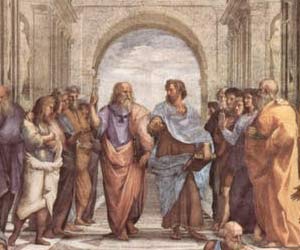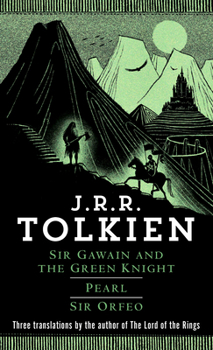Sir Gawain and the Green Knight/Pearl/Sir Orfeo
Select Format
Select Condition 
Book Overview
Three masterpieces of medieval poetry, translated by the author of The Lord of the Rings--including Sir Gawain and the Green Knight, the poem that inspired the major motion picture The Green Knight Comparable to the works of Chaucer, Sir Gawain and the Green Knight, Pearl, and Sir Orfeo weave a bright tapestry of stories from a remote age of chivalry and wizards, knights and holy quests--but...
Format:Mass Market Paperback
Language:English
ISBN:B0012GBU6E
ISBN13:9780345277602
Release Date:July 1988
Publisher:Del Rey Books
Length:224 Pages
Weight:0.27 lbs.
Dimensions:0.6" x 4.3" x 7.0"
Customer Reviews
5 ratings
Borroff is the Best!
Published by Thriftbooks.com User , 18 years ago
These are absolutely the best translations of the Gawain- (aka Pearl-) poet around. It's diabolically tricky to translate the Middle English of this obscure, anonymous poet, due to the fact that he combines the accentual, alliterative prosody of the native tradition with the rhythmic and rhyming verse of continental models. Of all the translators who have attempted it, Borroff by far provides an experience closest to reading this brilliant verse in the original. These translations were originally published in short paperback versions of each poem. These are often still available from used booksellers. If you are only interested in one poem (probably Sir Gawain), look for one of these used paperback versions, and save your money. Patience and Purity (or "Cleanness") are wonderful poems, but they are not really of much interest to the general reader, and are mostly studied by scholars or by grad students.
One of the best
Published by Thriftbooks.com User , 21 years ago
J.R.R. Tolkien is best known as a fantasy writer. But his lesser-known profession was that of an professor and linguist, working at Oxford for over three decade. These three translated poems are excellent examples of his non-Middle-Earth work."Sir Gawain and the Green Knight" is a relatively little-known Arthurian legend, in which the knight Sir Gawain must forfeit his life to a knight who allowed Gawain to behead him -- then picked up his head and rode out. "Pearl" is a beautifully written, though somewhat more difficult to read, poem that chronicles the death of a child (possibly allegorical). "Sir Orfeo" is a version of the classic myth of Orpheus and Eurydice.Tolkien's method for these works is unusually readable -- most translators sacrifice either readability or meaning; as far as I can tell, Tolkien sacrificed neither. "Sir Gawain" is probably the easiest translation I have come across; "Pearl" is haunting, laced with religious references, and very beautifully written; "Orfeo" is not so substantial as the first two, but still entertaining. It's a bit like a medieval ballad.This book is not so much for fans of Middle-Earth, as for fans of all Tolkien's works. Beautifully written, highly recommended.
Best modern translation
Published by Thriftbooks.com User , 22 years ago
This book contains a reprint of Borroff's now standard translation, in addition to translations of two other middle English poems from the Gawain ms. Borroff has not only rendered Gawain into very readable modern English, but has also retained the alliterative lines of the original. Aside from the merits of this edition as a translation, Sir Gawain is one of the finest poems written in the English language. There are several sharp departures from typical romances of this type, and in Gawain's test we are made to see the contradictory nature of the courtly ideal. Amazing in style, it is both a clever critique of chivalric values and an entertaining adventure. Due to the difficulty of the remote dialect of the original, this lively and witty romance is difficult to read in middle English, even for those who have studied Chaucer. It is, however, not impossible. For those who are interested in the poem, I would recommend reading it in translation, then trying the Anderson-Cawley (Everyman) edition, which normalizes the runic letters preserved in the Tolkien-Gordon-Davis (Oxford UP) scholarly edition.
The Most Metrical Translations in English
Published by Thriftbooks.com User , 22 years ago
Between Tolkien's legendarium and scholarship fall his translations, which are by far the most regularly metrical translations in English. "Sir Gawain" includes 101 laisses or verse paragraphs of varying length, head-rhymed on the head-stave, each with an end-rhymed bob-and-wheel refrain; "Pearl" includes 101 12-line stanzas with regular (alternating) end-rhymes in addition to the head-rhymes, plus stanza-linking rhymes. Not even Professor Lehmann's Beowulf includes 101 bob- & -wheel refrains.Tolkien's international reputation as a scholar began with his revival of "Sir Gawain" in the early `20s, and he developed these translations over the course of some 50 years. Scholarly consensus has held that "Sir Gawain" and "Pearl," the masterworks of the 14th-century Middle English alliterative-stave revival (standing in relation to Chaucer as Marlowe to Shakespeare), were composed by a West Midlands author whose name has not survived, the authentically bereaved father of the "Pearl" herself. Tolkien's "Gawain" lecture (published in The Monsters and the Critics) enlarges very helpfully on the early-`50s radio preface included in this volume."Sir Orfeo" is a mere frippery by comparison, in stichic ballad couplets, but probably originated as a single-author work as well. Admittedly there are more authoritative sources on the Classical myth of Orpheus and Eurydice than "Sir Orfeo," but that's part of the point: the Classical elements in these translations are real-life analogues of elvish/dwarvish influence in hobbit poetry.Another translation of "Sir Gawain" had been added to the Oxford Anthology of English Literature by the time Tolkien's became the first posthumous edition released by his youngest son, and Tolkien's will probably replace the current translation at some point during the 21st century. Tolkien has been taken to task for failing to complete a proof that "Sir Gawain" is a single-author work (which he might conceivably have done, considering his 1934 achievement with Chaucer's "Reeve"), but his translation answers eminence with eloquence even so.These works reflect a vibrant tradition of storytelling and minstrelsy, and the best way to read them would be to read each canto/stanza/couplet twice, once silently and once aloud; to which approach the prose paragraphs would recommend themselves as well. Tolkien's translations are associable with his other scholarly hobbies, including calligraphy, drawings and theatrical performances as well as prose fiction. Admirers of the verses in The Lord of the Rings will most likely find these translations well worth the substantially larger effort.
A Masterpiece of Literature
Published by Thriftbooks.com User , 23 years ago
This book gets five stars because it contains "Sir Gawain and the Green Knight" - not because Tolkien translated it (although that probably helps)"Sir Gawain and the Green Knight" is one of the masterpieces of the English language, one of those books we are asked to read in school over and over again (I personally read in in 12th grade AP English, my freshman year Arthurian legends class and Introduction to British Lit. my sophomore year). At first it is hard to read and you wonder why it is a legend.Then I read it out loud, the words sounded better than they read. I also began looking into the mythology behind the story (why Troy is important in the first lines for instance). In the end, I have come to love this poem. To be honest, although I like this edition quite a bit, I haven't gotten around to reading the other two poems. I mean to though, any time now.
Sir Gawain and the Green Knight, Pearl, and Sir Orfeo Mentions in Our Blog

Poetry Through the Ages
Published by Ashly Moore Sheldon • August 18, 2022
Poetry is one of the purest forms of expressing the human experience. It also offers a reflection of the era in which it was created. For National Poet’s Day on August 21, we celebrate the age-old artform with a tour of poetry through the ages.






